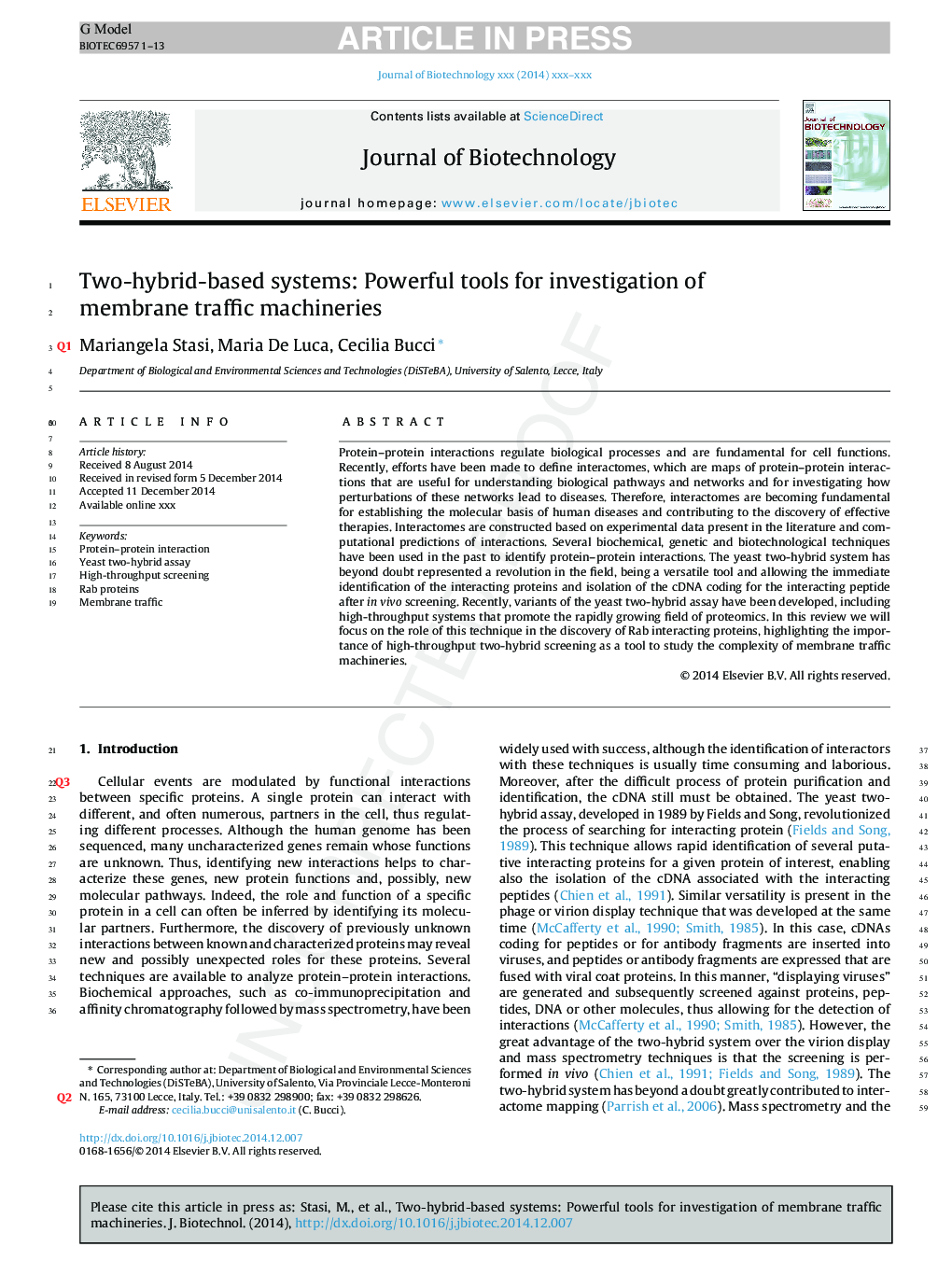| Article ID | Journal | Published Year | Pages | File Type |
|---|---|---|---|---|
| 6491185 | Journal of Biotechnology | 2015 | 13 Pages |
Abstract
Protein-protein interactions regulate biological processes and are fundamental for cell functions. Recently, efforts have been made to define interactomes, which are maps of protein-protein interactions that are useful for understanding biological pathways and networks and for investigating how perturbations of these networks lead to diseases. Therefore, interactomes are becoming fundamental for establishing the molecular basis of human diseases and contributing to the discovery of effective therapies. Interactomes are constructed based on experimental data present in the literature and computational predictions of interactions. Several biochemical, genetic and biotechnological techniques have been used in the past to identify protein-protein interactions. The yeast two-hybrid system has beyond doubt represented a revolution in the field, being a versatile tool and allowing the immediate identification of the interacting proteins and isolation of the cDNA coding for the interacting peptide after in vivo screening. Recently, variants of the yeast two-hybrid assay have been developed, including high-throughput systems that promote the rapidly growing field of proteomics. In this review we will focus on the role of this technique in the discovery of Rab interacting proteins, highlighting the importance of high-throughput two-hybrid screening as a tool to study the complexity of membrane traffic machineries.
Keywords
Related Topics
Physical Sciences and Engineering
Chemical Engineering
Bioengineering
Authors
Mariangela Stasi, Maria De Luca, Cecilia Bucci,
